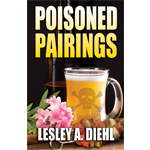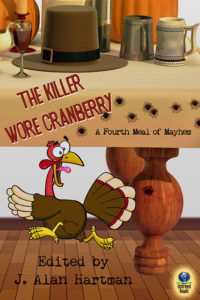The women in my writing
A question often asked writers is “Where do you get your ideas?” Usually that means where did the writer get the idea for a plot, but it also can refer to a character. The inspiration for plots and character emerge from both the writer’s creativity and from experience. Both fantasy and reality can shape what is written. Often it is a combination of both.
The first mystery I published with a small press didn’t feature a protagonist based upon anyone I knew. Hera Knightsbridge was the product of my imagination, someone created for the fictional owner of a small microbrewery in a river valley in Upstate New York. She was physically unlike me, although she shared some personality  characteristics with protagonist to comes: she was smart, dedicated to her work, had a lot to learn about herself and others, and she was, as are all my protagonists, snoopy, thus her propensity to insert herself in murder investigations.
characteristics with protagonist to comes: she was smart, dedicated to her work, had a lot to learn about herself and others, and she was, as are all my protagonists, snoopy, thus her propensity to insert herself in murder investigations.
The mysteries that followed were closer to home: Emily Rhodes in the Big Lake Murder mysteries was physically more similar to me: short, blonde and older with a background in early childhood issues, a retired preschool teacher.  Laura Murphy, the heroine of the Laura Murphy mysteries was very much me: older, a college professor, blonde, attached romantically to a biker and critical of many aspects of higher education.
Laura Murphy, the heroine of the Laura Murphy mysteries was very much me: older, a college professor, blonde, attached romantically to a biker and critical of many aspects of higher education.
With Laura Murphy I had run out of ways of putting me into my protagonists. Instead I struck gold by looking at the women in my family. In the Thanksgiving anthologies published by Untreed Reads, The Killer Wore Cranberry, Vols 1-5, A great aunt, my two grandmothers, my favorite aunt and even my mother morphed into characters with a lust for adventure and noses for murder.
My great aunt, Aunt Annie was my father’s aunt. She was very religious woman with a kind heart and a love of pink. Her own hair was thinning so she purchased a brown wig, wore a pink hairnet over it and pinned pink bows to the netting. Her favorite television show was Jack Paar. I believe she died in her nineties watching him. One day she gave me some advice: she told me I should be happy and kind to everyone I encountered. On my way into town that afternoon, I encountered a man which I cheerily said “hello’ to. He replied by shouting at me, “What’s up with you?” I learned kindness only goes so far, especially with miserable people. This great aunt appeared in my first Thanksgiving short story with her pink hairnet and bows, but she was not as flamboyant in her dress as my father’s mother, a tiny woman barely five feet tall who redesigned her daughter’s clothing. That the cast-off clothing was originally meant for a woman nearly six feet tall did not deter grandma. She tied gros grain ribbons around the size eleven shoes to make them stay on her size six feet and took up and in clothing by using any means including tape, thread, pins and staples. She was the originator of the reuse, repurpose and recycle movement before environmentalists got ahold of it. Along with my other grandmother who loved Muscatel wine both to drink and to pour over Anne Page fruit cakes and claimed to speak Swedish (that may have been a lie), these three women formed the posse to my six-foot-tall and flaming red-haired aunt, who had attitude and a mouth to match. With material this great, why not embellish it a bit and make these gals the amateur sleuths who go after criminals attempting to spoil holidays? I will admit up front that I had to do little embellishing. These women were unusual enough to stand on their own real life unusual personalities. I could hardly ignore my own mother who became the woman with five wealthy husbands, all of whom died under unusual circumstances. That was pure fiction. My mother had one husband who died young. In fact, most of the men in my family died young. As I say in my stories, “The women in my family were hard on men.”
The grannies and my bold aunt were more direct translations of real people than were other protagonists such as Eve Appel. She is tall, reed thin, has punked hair and wears stiletto heels. She lives in rural Florida and her only similarity to my other protagonists is probably found in her career choice: she owns a consignment shop and loves all things used. She’s the younger, more fashionable version of my recycling grandmother. Eve is further fleshed out through my own lust with used clothing, furniture and household items. Yes, granny got me hooked also, although I never have worn gros grain ribbons on my shoes although I admit to taking in a seam with a bit of duct tape.
Nosey, snoopy, sassy, funny women—women from my past and from my fantasies.
Do you base characters on people you know? Do you dare base them upon your relatives?
Writer’s note: All the relatives whose lives I have used in my books and stories are deceased. It’s perhaps safer that way.